In the 19th century it was common for eating places to offer breakfast, along with dinner and supper (as the meal sequence ran then). That was because so many of their patrons were travelers or people (mostly men) who did not have households and ate all their meals away from their lodgings.
A Baltimore coffee house proprietor advertised in 1812 that from 7 until 10 in the morning he would have “every sort of cold Breakfasts, a la Parisienne, or warm ones, such as Chocolate, Coffee, Tea, &c. served up in the best style.” Unlike most, he specialized in “elegance,” with food produced by a French cook.
All kinds of things were eaten for breakfast then. An Englishman traveling around the country in the early 1840s was surprised by the wide range of dishes available. Beyond a selection of meats, he listed rolls, toast, eggs, chicken, gravy, and “cakes of buckwheat and Indian corn.” He was disgusted by a favorite do-it-yourself concoction at one hotel he stayed at — a raw or near-raw egg whipped with butter and condiments and spooned or drunk from a wineglass.
Breakfast all day, in the form of bacon and eggs, was not unknown. And it was also common to offer the same dishes for breakfast and supper, particularly outside the East. At San Francisco’s Popular Dining Saloon, in 1887, patrons had many choices, including quail on toast, a “family porterhouse,” eggs and oysters, hot cakes, corned beef hash with an egg, waffles, boiled corn in cream, and more. [pictured is a somewhat similar menu from St. Louis, 1875]
Oysters for breakfast? Why not? Anyone living today might gasp at the breadth of offerings on an 1880 advertisement for a Portland OR restaurant bill of fare: Codfish balls, Family Porterhouse, Salmon bellies, Brains, German Pancakes, Oysters, Waffles, etc. What might “etc.” even mean?
Some of the most elaborate breakfasts were those served to butchers by Mme. Begue after closing time of the big New Orleans market. Breakfast one day in 1905 included successive courses of shrimp salad, oysters a la Newberg, omelette filled with sweetbreads, cauliflower with egg dressing, broiled mutton chops and peas, and fruit and cheese. All accompanied by wine and coffee aflame with brandy. Those were truly the olden days. By contrast, the 20th century would be known for the light breakfast, nothing like Madame’s (though maybe the popularity of brunch comes closest, regarding both the variety of foods and the alcoholic beverages).
Cereals played a role in lightening breakfasts. Branded cereals had their start in the later 19th century, but were not heavily promoted until the early 20th. Marketing campaigns featured eating places. In 1902 Hotel Monthly noted that promoters of shredded wheat had been successful in getting it onto menus in “hotels, restaurants, clubs, dining cars, steamships and lunch rooms,” to the point where an estimated 5,000 hotels and restaurants were serving it to patrons. The rising demand for cleanliness in food launched the popularity of single-serving cereal packages. Counter seating in lunchrooms meant that display shelves offered opportunities for promoting branded products. It didn’t take long for companies such as Post and Kellogg to begin providing handy display cases. [Kellogg’s ad in American Restaurant Magazine, 1946]
Despite the trend toward lighter and more standardized breakfasts, as late as 1921 Boston stood out with breakfast menus that catered to local demand for oysters, baked beans, and pie. Another oddity was the breakfast item that appeared in the 1926 Edgewater Beach Hotel Salad Book. Named “Eight-Fifteen,” it was lettuce and watercress with ham and hard-boiled eggs.
By the 1930s light breakfasts had beaten out the old favorite, ham & eggs. Also, time spent eating the morning meal was on its way down from half an hour to ten minutes. Breakfast was looking like a losing deal for restaurants, even with the additional lures of waffles and pancakes. Although restaurant patronage was on the rise in 1960, a survey by the National Restaurant Association and General Foods showed that 61% of meals eaten out were lunch, 28% were dinner, and only 11% were breakfast.
However, in the 1960s and 1970s the number of restaurant breakfasts seemed to be on the rise and by the middle of the 1970s McDonald’s had begun trying out breakfast items. Breakfast menus became widely popular at fast food outlets in the 1980s, driving up the number of breakfasts eaten out. Among breakfast menus’ other advantages for burger chains then was relief from the rising price of beef. [McDonald’s postcard, 1979]
Another interesting breakfast development that spread across the U.S. in the 1980s was the so-called power breakfast. An occasion for an informal meeting of power brokers and business executives, it was said to have begun with those in the world of finance who gathered in the late 1970s at the Regency Hotel’s Le Restaurant in NYC. More meeting than meal, power breakfasters ate little and drank even less, in striking contrast to the legendary but largely fictitious three-martini lunch. Though often hosted by hotels, an interesting effect of the power breakfast was to induce some elite restaurants to open for breakfast.
© Jan Whitaker, 2021


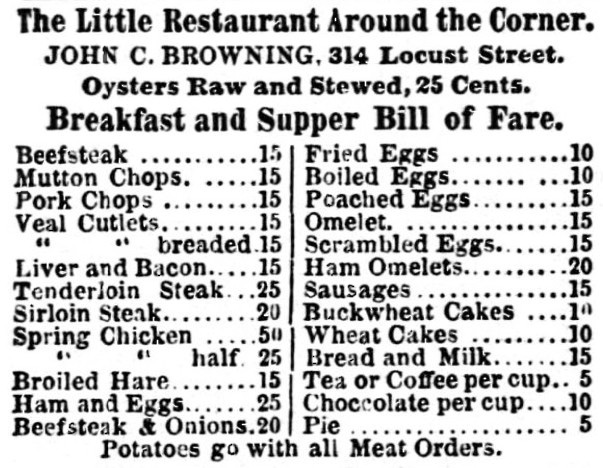

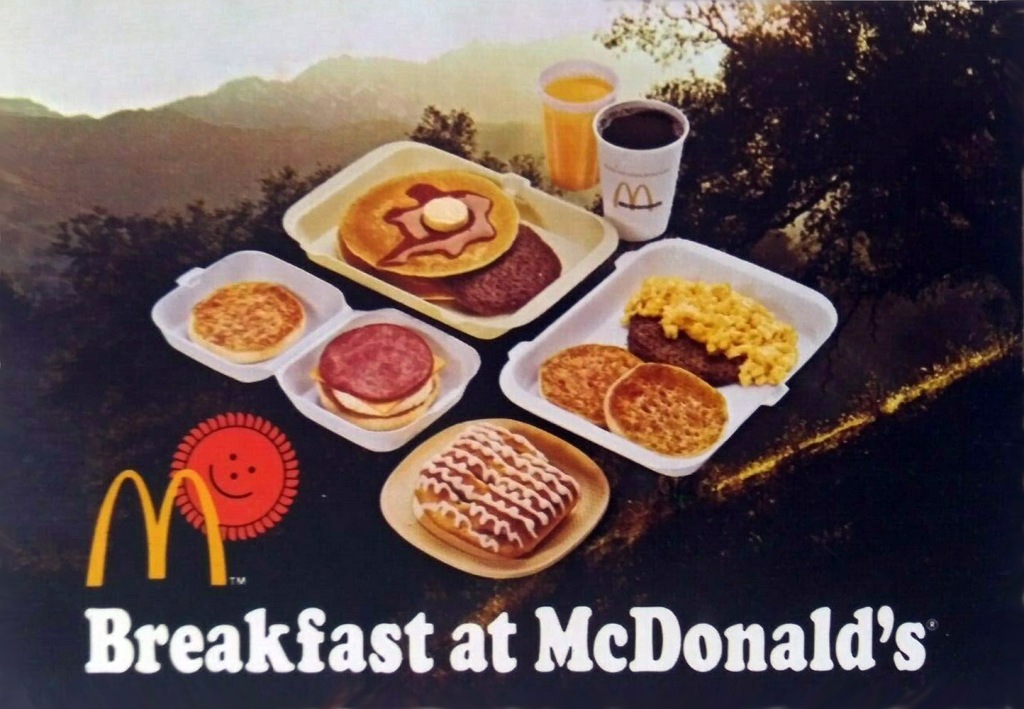
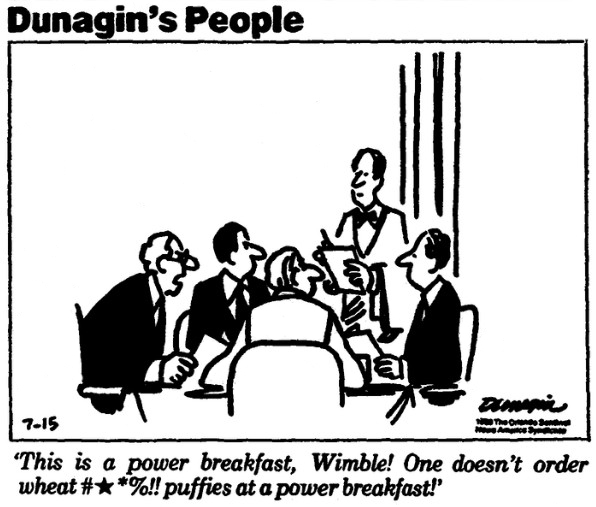








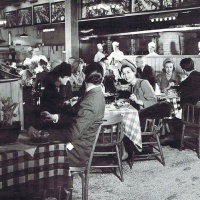
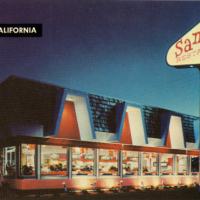

 It's great to hear from readers and I take time to answer queries. I can't always find what you are looking for, but I do appreciate getting thank yous no matter what the outcome.
It's great to hear from readers and I take time to answer queries. I can't always find what you are looking for, but I do appreciate getting thank yous no matter what the outcome.


